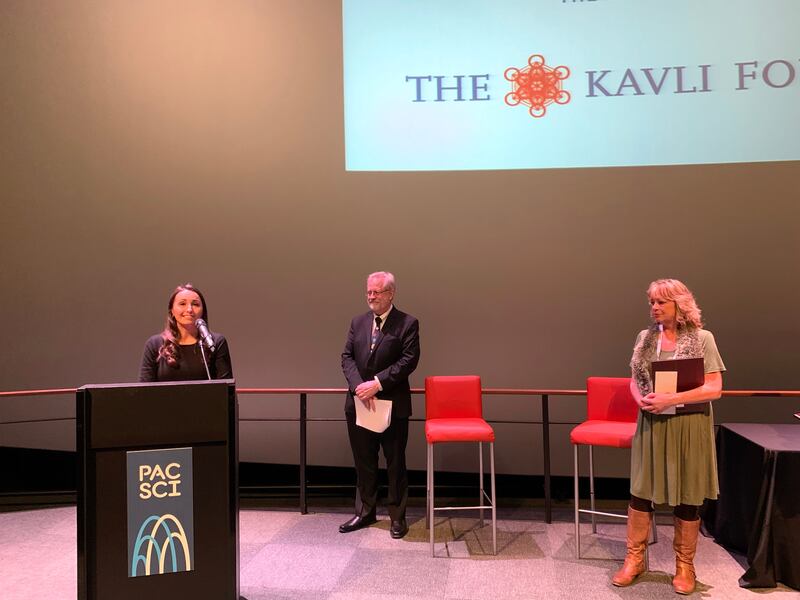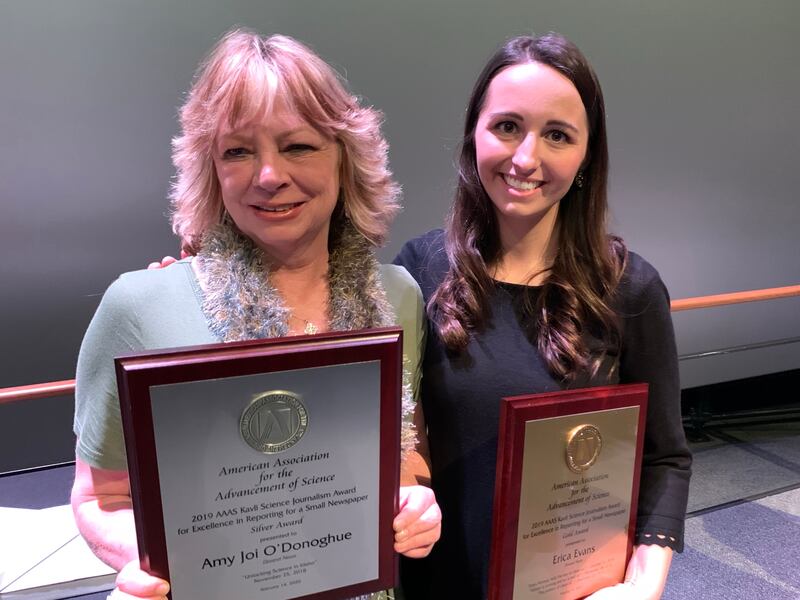SEATTLE, Washington — Here under the shadow of the Space Needle, scientists and science journalists from around the world gathered as part of the American Association for the Advancement of Science, commonly referred to as “Triple As.”
“Envisioning Tomorrow’s World” was the focus of the conference and encompasses, well, all things about our future selves and about our planet. Bill Gates was a keynote speaker and addressed the benefit of science to provide diagnostic tools and vaccines to battle real world problems, noting specifically the fight underway to prevent a coronavirus pandemic.
The Gates Foundation, founded two decades ago, has helped fight disease using focus, leadership and billions of dollars to back the effort. Gates told those gathered in Seattle that the work is now on the verge of great things, including its stated goal that one day “a child born anywhere (will have) a very low chance of being malnourished or dying below the age of 5.”
HIV, tuberculosis and malaria may one day soon be eradicated, and the stories that science journalists will tell will (hopefully) be of successes like these, shining a light on the obstacles that prevent these success stories and promoting change. In-depth news stories took center stage Friday night in an auditorium at the Pacific Science Center for the conference’s AAAS Kavli Science Journalism Awards featuring the finest science journalism in the world.
Entries came from 47 countries. Awards in eight categories were presented in print, digital, video, audio and magazine journalism. A gold and silver award was presented in each category. The Deseret News received two awards — a gold and a silver — drawing attention for its commitment to solutions-based and explanatory journalism.
“It is unusual for reporters from the same newspaper to win awards in the same category in a single year, but the judging panel was impressed by the work of the winners, Erica Evans and Amy Joi O’Donoghue, and their newspaper’s commitment to local reporting,” the KAVLI association said both in announcing the award and again during the presentation Friday.
The Seattle Times won for “Hostile Waters: Orcas in Peril.” A writer for Le Monde (Paris) won for “La science au chevet de Notre-Dame (At the bedside of Notre Dame).” Other winners were from The New Republic, The Times Magazine (London) and BBC World Service among others.

Of the Deseret News, Judge Laura Helmuth, health, science and environment editor for The Washington Post, said Evans “built trust with the reader by explaining throughout the series who she was, why she was in Oslo (Norway), and how that city’s experience related to Salt Lake City — it was personal and open without being self-indulgent. Her analysis of what air quality measures worked and didn’t, and why, was thoughtful and nuanced, and always clearly tied to what her local readers need to know.”
She won the gold award for “Does Norway hold the key to clean air,” following it with stories about the politics of clean air that were difficult to overcome in Salt Lake City, burdened by inversion-driven pollution.
Judge Maggie Koerth, a senior science writer for the FiveThirtyEight website, called O’Donoghue’s entry “a great series delving into a world that local readers will find simultaneously familiar and mysterious. ... It (represented) crucial transparency journalism and a great example of how science reporting can help people understand both the benefits and risks” of science.

Her series took readers inside the Idaho National Laboratory and was headlined, “Unlocking Science in Idaho.”
This is the place where the world’s first usable electricity from atomic energy was developed in 1951. This is the place that assembled and tested the power source for the Mars Curiosity rover.
The Deseret News is committed to providing in-depth news, information and commentary that can make the world a better place and people better people. The Kavli Foundation is celebrating its 75th anniversary this year. Those on the awards managing committee noted that “journalists make science relevant to the world around us.”
Silver winner Nathaniel Herzberg of Le Monde explored “the work of scientists trying to understand the past and potential future of Notre Dame cathedral in the wake of the devastating fire that nearly destroyed the historic structure in April 2019.” His story was about more than a structure.
A good journalist, covering science or any other discipline, understands that they are writing about the human condition. That’s what both Erica and Amy did for the Deseret News in their projects, understanding the impact of pollution on each of us, and in Amy’s case, explaining how a laboratory in Idaho is changing all of our lives.


